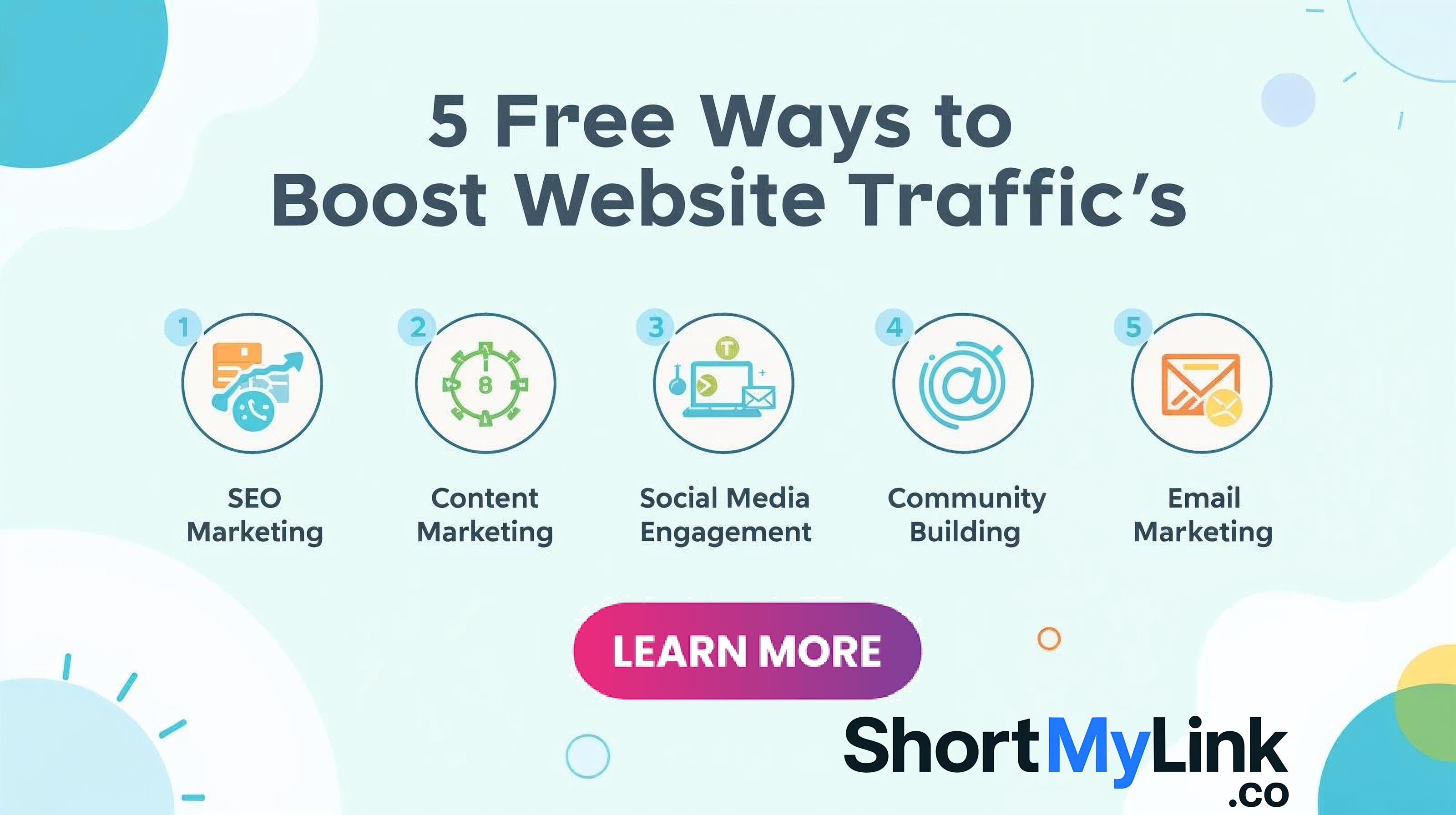
If you are searching for increasing website traffic for free this guides will help you on that. Stop paying for ads. Start generating free website traffic with our step-by-step guide. Master keyword research, content creation, and smart promotion techniques.
Before you start, understand what Google and users value: Experience, Expertise, Authoritativeness, and Trustworthiness. Everything you do should aim to demonstrate these qualities.
Phase 1: Foundation & On-Page SEO (The "If You Build It" Part)
You need a solid foundation before you can attract visitors.
Keyword Research: This is non-negotiable. You need to know what your potential audience is searching for.
Tools: Use free tools like Google Keyword Planner, Ubersuggest, or AnswerThePublic.
Goal: Find long-tail keywords (3-4 word phrases) like "best free tools for beginner gardeners" instead of just "gardening." They are less competitive and have higher intent.
On-Page SEO: Optimize your existing content so search engines can understand it.
Title Tags: Every page should have a unique, compelling title tag (under 60 characters) that includes your primary keyword.
Meta Descriptions: Write engaging summaries (under 160 characters) that encourage clicks from search results.
Headings (H1, H2, H3): Use a clear H1 tag for the main title and H2/H3 tags to structure your content. Include keywords naturally.
URL Slugs: Keep URLs short, readable, and keyword-rich (e.g.,
yoursite.com/free-website-traffic-tips).Image Optimization: Compress images for speed and use descriptive file names and alt text (e.g.,
alt="free-guide-to-on-page-seo-checklist").
Site Speed & Mobile-Friendliness:
Test Speed: Use Google PageSpeed Insights. A slow site drives people away and ranks lower.
Mobile-Friendly: Ensure your site looks and works perfectly on phones. This is critical for Google ranking.
Phase 2: Content Creation & SEO (The "They Will Come" Part)
Content is the primary fuel for free traffic.
Create Pillar Content and Cluster Pages: This is a powerful strategy.
Pillar Page: A comprehensive, long-form guide on a broad topic (e.g., "The Complete Guide to Digital Marketing").
Cluster Pages: Individual blog posts that cover subtopics in detail (e.g., "What is SEO?", "Email Marketing for Beginners," "Social Media Strategy") and link back to the pillar page. This creates a topic cluster that signals authority to Google.
Solve Problems and Answer Questions: Use your keyword research to create content that answers specific questions. Target "how to," "what is," and "why does" queries.
Update Old Content: Go back to your old blog posts and update them. Add new information, improve the formatting, and refresh the publication date. This tells Google your content is fresh and relevant.
Phase 3: Promotion & Off-Page SEO (The "Spread the Word" Part)
Creating great content isn't enough. You have to be your own biggest promoter.
Leverage Social Media (The Right Way):
Choose Your Platforms: Don't be everywhere. Be where your audience is (e.g., LinkedIn for B2B, Pinterest/Instagram for visual niches, X/Twitter for real-time engagement).
Engage, Don't Just Broadcast: Share other people's content, comment in groups, join conversations. The goal is to build a community, not just a broadcast channel.
Repurpose Content: Turn a blog post into a Twitter thread, a series of Instagram carousels, or a LinkedIn article.
Online Communities: This is a HUGE source of targeted traffic.
Reddit: Find relevant subreddits (e.g.,
/r/entrepreneur,/r/cooking). Read the rules first. Become a valuable member by answering questions genuinely. Only share your link when it's a truly helpful, non-promotional resource.Quora & Forums: Find questions related to your niche and provide detailed, helpful answers. You can subtly link to your blog post for more in-depth information.
Facebook/LinkedIn Groups: Join active groups in your industry. Participate in discussions and share your expertise.
Build Email List from Day One:
Offer a Lead Magnet: Create a valuable freebie (e.g., a checklist, ebook, template) in exchange for an email address.
Send a Newsletter: Drive traffic back to your new blog posts by announcing them to your subscribers. This is your most reliable traffic source.
Guest Blogging:
Find blogs in your niche that accept guest posts.
Pitch them a fantastic, unique article idea that provides value to their audience.
In your author bio, you get a link back to your site. This brings referral traffic and SEO value.
Phase 4: Analysis & Iteration (The "Make It Better" Part)
Google Search Console (GSC): This is your most important free tool.
See which keywords your site is already ranking for.
Find pages that are getting impressions but few clicks. Can you improve the title or meta description to get more clicks?
Identify and fix technical SEO errors.
Google Analytics (GA4): Understand your audience.
See which pages are most popular (your "top-performing content").
Find out where your traffic is coming from (organic search, social media, referrals).
See how long people stay on your site (dwell time).
Quick-Start Action Plan (Your First Week)
Install Google Search Console & Google Analytics.
Run your site through PageSpeed Insights and fix the easiest speed issues.
Perform keyword research for 5 long-tail phrases related to your niche.
Write one comprehensive, high-quality article targeting one of those phrases.
Share that article on your social media and in one relevant online community (following the rules!).
Remember: Free traffic takes time and consistent effort. Focus on providing genuine value, and the traffic will follow. Good luck



.jpg)